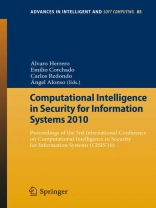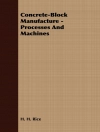rd The 3 International Conference on Computational Intelligence in Security for Information Systems (CISIS 2010) provided a broad and interdisciplinary forum to present the most recent developments in several very active scientific areas such as Machine Learning, Infrastructure Protection, Intelligent Methods in Energy and Transportation, Network Security, Biometry, Cryptography, High-performance and Grid Computing, and Industrial Perspective among others. The global purpose of CISIS series of conferences has been to form a broad and interdisciplinary meeting ground offering the opportunity to interact with the leading research team and industries actively involved in the critical area of security, and have a picture of the current solutions adopted in practical domains. This volume of Advances in Intelligence and Soft Computing contains accepted papers presented at CISIS 2010, which was held in León, Spain, on November 11–12, 2010. CISIS 2010 received over 50 technical submissions. After a thorough peer-review process, the International Program Committee – lected 25 papers which are published in this conference proceedings. This allowed the Scientific Committee to verify the vital and crucial nature of the topics – volved in the event, and resulted in an acceptance rate close to 50% of the ori- nally submitted manuscripts.
Зміст
1: Machine Learning and Intelligence.- An Incremental Density-Based Clustering Technique for Large Datasets.- BSDT ROC and Cognitive Learning Hypothesis.- Evolving Fuzzy Classifier for Data Mining – an Information Retrieval Approach.- Mereotopological Analysis of Formal Concepts in Security Ontologies.- 2: Agents and Multi-Agent Systems.- A Multi-agent Data Mining System for Defect Forecasting in a Decentralized Manufacturing Environment.- A Distributed Hierarchical Multi-agent Architecture for Detecting Injections in SQL Queries.- Incorporating Temporal Constraints in the Analysis Task of a Hybrid Intelligent IDS.- 3: Image, Video and Speech Processing.- Performances of Speech Signal Biometric Systems Based on Signal to Noise Ratio Degradation.- Lipreading Using n–Gram Feature Vector.- Face Processing for Security: A Short Review.- 4: Network Security.- Ontologies-Based Automated Intrusion Response System.- Semi-supervised Fingerprinting of Protocol Messages.- Monitoring of Spatial-Aggregated IP-Flow Records.- Improving Network Security through Traffic Log Anomaly Detection Using Time Series Analysis.- A Threat Model Approach to Threats and Vulnerabilities in On-line Social Networks.- An SLA-Based Approach for Network Anomaly Detection.- Understanding Honeypot Data by an Unsupervised Neural Visualization.- 5: Watermarking.- Permuted Image DCT Watermarking.- A Developed Water Mark Technique for Distributed Database Security.- 6: Cryptography.- Trident, a New Pseudo Random Number Generator Based on Coupled Chaotic Maps.- The Impact of the SHA-3 Casting Cryptography Competition on the Spanish IT Market.- 7: Industrial and Commercial Applications of Intelligent Methods for Security.- A New Task Engineering Approach for Workflow Access Control.- OPBUS: Fault Tolerance Against Integrity Attacks in Business Processes.- A Key Distribution Scheme for Live Streaming Multi-tree Overlays.- Intelligent Methods for Scheduling in Transportation.












